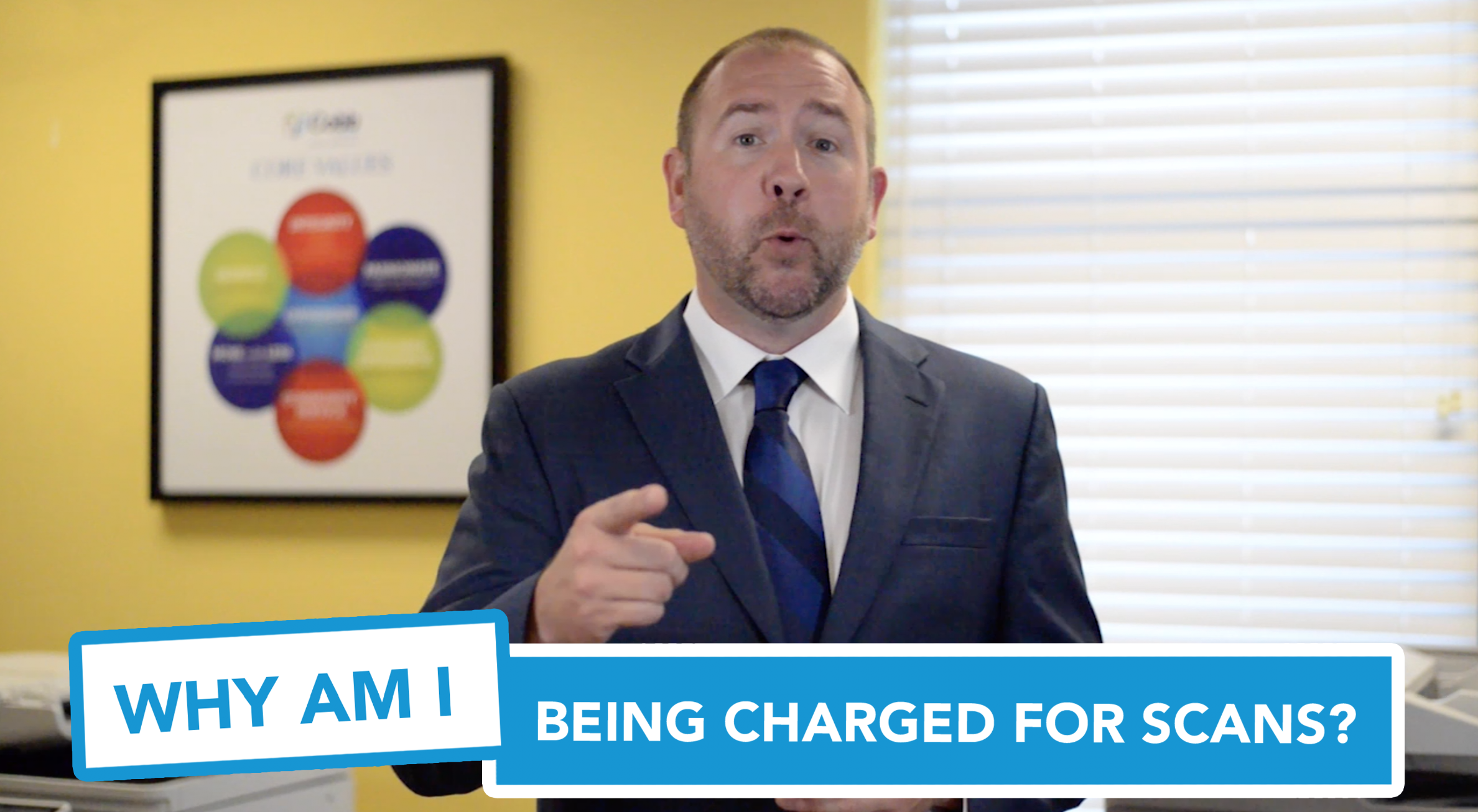2 min read
We “LOUVRE” Strong Passwords: How a Weak Password Can Lead to Big Losses
The Louvre’s password became the punchline of a global story after a heist revealed major security concerns for the museum. Reports say the password...
BELOW IS A TRANSCRIPT OF THE VIDEO.
It might seem a bit strange at first, but it is almost an industry standard; when scanning a document through a MFP (multi-function printer), you are charged for that scan. Now, you may be asking yourself, “why?,” and it is due to one simple reason — scanning, just like printing or copying, wears parts in your MFP down over time.
Not all businesses charge for scans in the same way — and in fact, there are three different methods of including the cost of scans in your monthly bill:
First, let’s start with option number two — a monthly allowance. A monthly allowance gives you business a certain number of scans per month that will not be charged. This number of free scans can range from 1000 to 1500 scans per month, meaning only your 1501st scan, for example, will be charged. This charge usually falls somewhere between .003 cents to .005 cents per copy — meaning a business would be charged three-to-five dollars for every 1000 scans over their monthly allowance.
Next, option number one — charging for every scan. While this may seem like the worst of the three options, it is actually better that number three. At least when you are charged for every scan, you are given the ability to be more accurate in your cost analysis breakdowns, and will have a more exact picture of your operating costs.
Transparency is, as mentioned above, key to understanding your finances. Just like a phone bill will come with a separate line item for every phone line associated with the bill, a billing invoice for your MFP will come with a separate line item for your printing, copying, and scanning usage.
The reason for which we touched on briefly above — the more a machine is used, the more likely its parts are to fail. Just like a printer drum is usually guaranteed to function up to 100,000 prints, the belts and rollers that make scanning possible also come with their own lifetime. The two parts that an MFP uses for scanning are rollers, and the scan bar.
As these parts are used over and over again, they experience wear and tear, and will need to be serviced more often, and eventually, replaced. Businesses will charge for scans for the same reason they charge for prints and copies — both parts and labor come with a cost.
The truth is, scanning is now a business necessity, and is therefore happening at higher rates than ever before. Since the belts and rollers that make scanning possible that historically did not see too much wear and tear, and businesses need every function of their technology to operate at peak efficiency, regular maintenance and replacement or parts is necessary to maintaining an efficient workplace.
If your business scans thousands and thousands of documents every month, it is worth the up-front cost of purchasing a standalone scanner. While a MFP is certainly more than capable of scanning, a standalone scanner will be able to handle higher volumes of scans faster, and at a cheaper price.
If you are wondering about whether your current MFP, or a specialized scanner would be best for your business, reach out to your representative — they should be able to go over your current pay structure, your monthly scan volumes, and whether or not a standalone scanner will pay for itself over time.

2 min read
The Louvre’s password became the punchline of a global story after a heist revealed major security concerns for the museum. Reports say the password...

6 min read
Organizations of all sizes handle enormous volumes of data. Data is one of the most valuable assets of any organization.Unfortunately, it’s also a...

5 min read
In today’s digital-first workplace, your network is more than just a connection point; it’s the foundation of your operations. Whether your...
